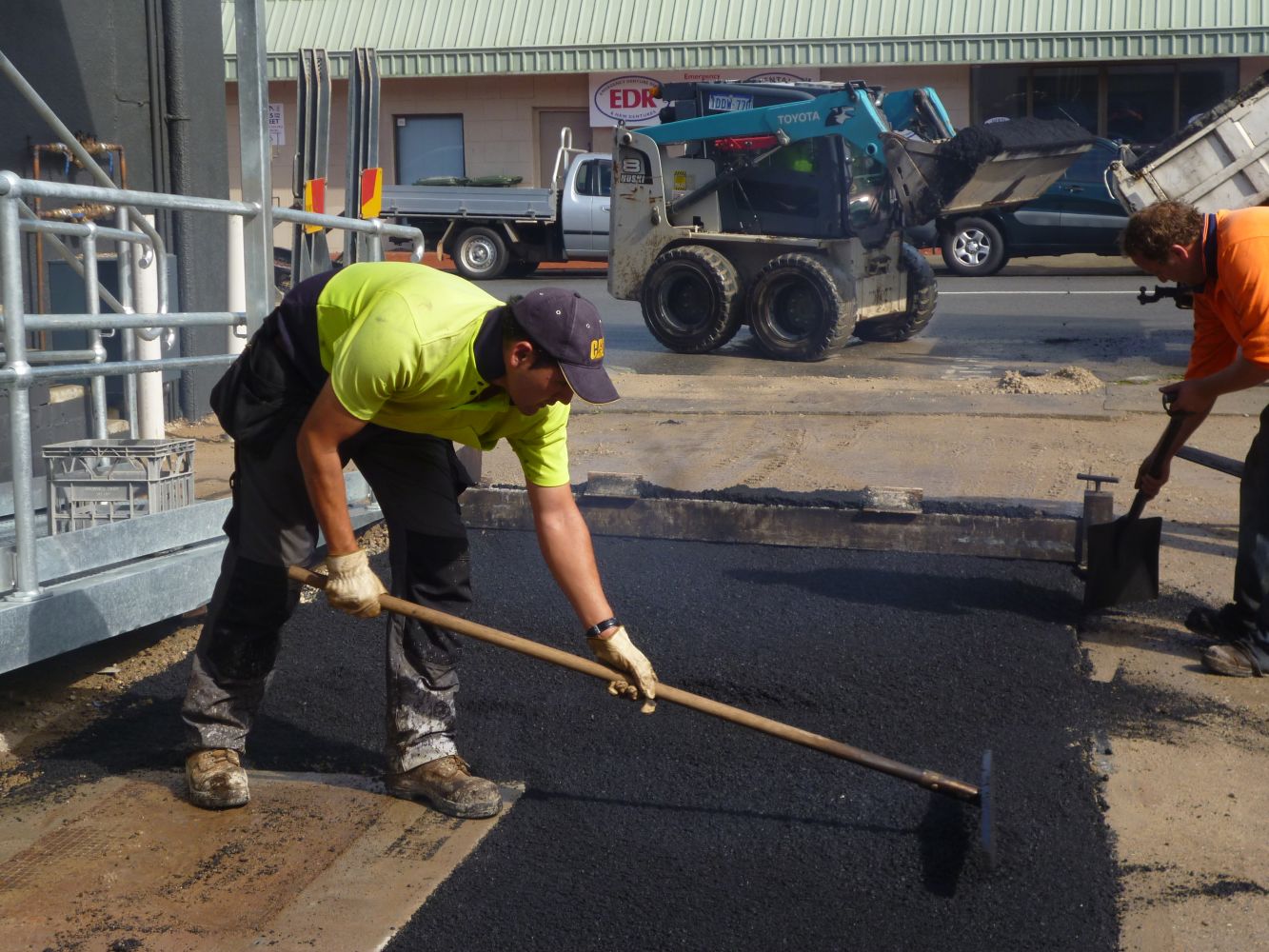As one of Perth’s leaders in pothole repairs, Claremont Asphalt know all about the problems potholes can cause. We also know that they are an unfortunate and unavoidable reality for most asphalt surfaces. While it is possible to slow their development, there is no foolproof way to stop them from forming.
The good news is, if you get onto them early, asphalt pothole repairs are usually straightforward. Generally, they should take less than a day and good pothole repair should be almost invisible once complete.
Here we take a closer look at potholes – how they form and the dangers they present. We also go over the pothole repair process and what you should do if you see a pothole developing.

Cause: How do potholes happen?
As noted, the development of potholes is often unavoidable. This is because they are primarily caused by ongoing exposure to natural elements.
No matter how well sealed an asphalt surface is, some moisture will still seep through. This combines with the natural groundwater and sits under the pavement. Then, this water expands and contracts as the temperature rises and falls, placing extra pressure on the surface.
Over time, this weakens the pavement, causing it to crack. This process is often sped up by the surface having to bear significant weight, like that of trucks and cars. As these drive over the already weakened asphalt, cracks get bigger and begin to form potholes.
Risk: What dangers do potholes pose?
Once a pothole has formed, it can create a wide range of issues. Most significantly, it has the potential to cause a lot of damage to any vehicle that drives over it. From punctures and broken rims to creating issues with suspension and alignment, potholes can cause some serious (and expensive) problems.
Potholes are an even bigger issue for motorbikes. In addition to doing damage to the bike, a pothole can also cause the rider to lose control, potentially resulting in injury. There have even been cases of local councils and road authorities being held legally accountable for injuries caused by potholes.
It is also worth noting that, the longer the pothole is left unfilled, the harder it will be to fix. If there’s regular traffic through the area, the damage will likely grow and get worse. This will mean that the repair work required is much more involved and expensive. As such, it’s best to get on top of any asphalt pothole repairs as quickly as possible.
Finally, potholes simply do not look good. They can have a major impact on the curb appeal of a business or home, putting off customers and visitors. But good pothole repairs can have the surface looking almost as good as new again.
Solution: How do you fix a pothole?
Thankfully, asphalt pothole repairs are straightforward. Generally, the process includes:
- Assessing the site to confirm the scope of works
- Removing the damaged section
- Preparing the pothole for repair by applying a binder
- Laying the asphalt
- Compacting and leveling the asphalt to remove any “speed humps”
- Removing any rubbish and tidying the site
For more information on this process, or to request your free quote, contact Claremont Asphalt. We’re one of Perth’s leaders in asphalt pothole repairs and are committed to providing the best service possible. Our team has over 20 years of experience and will work with you to complete repairs on time and within budget.

